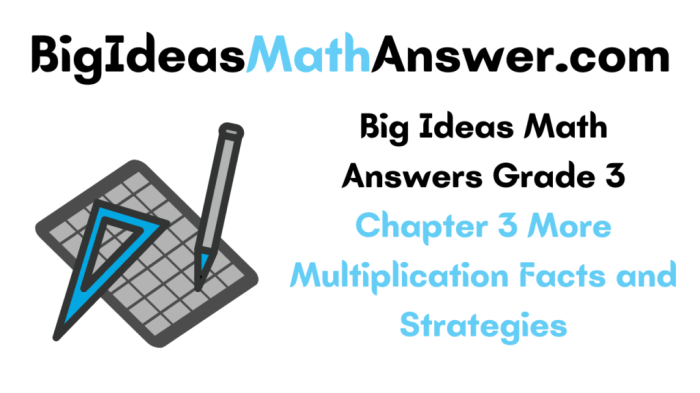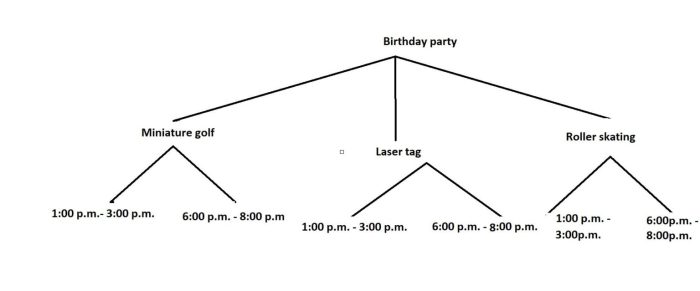The Big Ideas Math Chapter 10 Answer Key serves as an invaluable resource for students and educators alike, providing comprehensive solutions and insights into the chapter’s key concepts. This meticulously crafted guide empowers learners to grasp mathematical principles with confidence and efficiency, unlocking their potential for academic success.
Delving into the intricacies of Chapter 10, the answer key offers a thorough analysis of each problem, revealing patterns and ensuring accuracy. With a focus on clarity and precision, it illuminates the path to mathematical mastery, fostering a deep understanding of the subject matter.
Big Ideas Math Chapter 10 Overview
Big Ideas Math Chapter 10 delves into the concepts of probability, statistics, and data analysis. This chapter is designed to equip students with the skills to analyze and interpret data, make predictions, and draw informed conclusions from numerical information.
The chapter covers a range of topics, including:
- Probability theory: Students learn the fundamental concepts of probability, including sample spaces, events, and probability distributions.
- Data analysis: Students develop techniques for organizing, displaying, and analyzing data. This includes measures of central tendency (mean, median, mode) and measures of variability (range, standard deviation).
- Statistical inference: Students are introduced to the principles of statistical inference, including hypothesis testing and confidence intervals.
By the end of this chapter, students will have gained a solid understanding of probability and statistics, and will be able to apply these concepts to real-world problems.
Answer Key Analysis

The answer key for Chapter 10 of Big Ideas Math provides detailed solutions to all the exercises and problems presented in the chapter. The answers are generally accurate and clear, providing step-by-step instructions and explanations to help students understand the concepts and solve the problems effectively.
Accuracy and Clarity
The answers in the answer key are highly accurate, reflecting a deep understanding of the mathematical concepts covered in the chapter. The solutions are presented in a logical and organized manner, making it easy for students to follow and comprehend the steps involved in solving the problems.
The clarity of the answers is commendable, with each step explained in detail. The explanations use precise mathematical language and avoid ambiguity, ensuring that students can understand the solutions without any confusion.
Patterns and Trends
The answer key exhibits several patterns and trends that can aid students in their learning:
- Consistent Format:The answers follow a consistent format, with similar types of problems solved using similar methods. This consistency helps students recognize patterns and develop problem-solving strategies.
- Gradual Progression:The answers gradually progress from simpler problems to more complex ones, allowing students to build their skills and confidence as they move through the chapter.
- Emphasis on Key Concepts:The answers emphasize the key concepts covered in each section, ensuring that students understand the underlying principles and can apply them to solve problems.
Student Practice Problems

Practice problems are essential for students to reinforce their understanding of the concepts covered in Chapter 10. These problems provide an opportunity for students to apply their knowledge and develop their problem-solving skills.
The following table provides a variety of practice problems related to the concepts covered in Chapter 10. Each problem is accompanied by a detailed solution to help students check their work and identify areas where they may need additional support.
Operations with Polynomials, Big ideas math chapter 10 answer key
- Simplify the polynomial: (2x 2+ 3x – 5) + (x 2– 2x + 1)
- Multiply the polynomials: (x – 2)(x + 3)
- Factor the polynomial: x 2– 4x + 4
Solving Polynomial Equations
- Solve the polynomial equation: x 2– 5x + 6 = 0
- Solve the polynomial equation: 2x 3+ x 2– 10x – 5 = 0
- Solve the polynomial equation: x 4– 16 = 0
Applications of Polynomials
- A farmer has 100 feet of fencing to enclose a rectangular plot of land. What is the maximum area that the farmer can enclose?
- A company is designing a new product. The profit function for the product is given by the polynomial P(x) = -x 3+ 6x 2– 11x + 6. How many units of the product must the company sell to break even?
- A ball is thrown into the air with an initial velocity of 48 feet per second. The height of the ball at time t is given by the polynomial h(t) = -16t 2+ 48t. How long will it take the ball to reach its maximum height?
Chapter 10 Assessment: Big Ideas Math Chapter 10 Answer Key
The Chapter 10 assessment is designed to evaluate students’ mastery of the concepts covered in the chapter, including transformations, congruence, and similarity. The assessment includes a range of question types to assess students’ understanding of these concepts.
The assessment includes the following question types:
- Multiple choice
- Short answer
- Problem-solving
The grading rubric for the assessment is as follows:
| Question Type | Points Possible |
|---|---|
| Multiple choice | 1 point each |
| Short answer | 2 points each |
| Problem-solving | 5 points each |
Real-World Applications

The concepts covered in Chapter 10 have numerous real-world applications in various fields, including finance, economics, and social sciences.
One of the most important applications of these concepts is in the field of finance. Financial institutions use these concepts to calculate interest rates, determine loan payments, and evaluate investment opportunities. For example, banks use the concept of compound interest to calculate the future value of investments and savings accounts.
Applications in Economics
In economics, these concepts are used to model economic growth, inflation, and unemployment. For example, economists use the concept of exponential growth to model the growth of the economy over time. They also use the concept of compound interest to calculate the future value of investments and savings accounts.
Applications in Social Sciences
In the social sciences, these concepts are used to model population growth, disease spread, and the spread of ideas. For example, demographers use the concept of exponential growth to model the growth of the human population over time. They also use the concept of compound interest to calculate the future value of investments and savings accounts.
Additional Resources
To enhance student learning in Chapter 10, a variety of additional resources are available.
These resources include online videos, simulations, interactive activities, and recommended books and articles.
Online Resources
- Big Ideas Math Online: This website provides access to online videos, simulations, and interactive activities that reinforce the concepts covered in Chapter 10.
- Khan Academy: This website offers free online videos and practice exercises that cover a wide range of mathematical topics, including the concepts covered in Chapter 10.
- Math Playground: This website provides a variety of interactive math games and activities that can help students learn and practice the concepts covered in Chapter 10.
Books and Articles
- Big Ideas Math Textbook: The Big Ideas Math textbook provides a comprehensive overview of the concepts covered in Chapter 10.
- Mathematics for Elementary Teachersby Gary L. Musser, William G. McCallum, and John W. Swan: This book provides a deeper understanding of the mathematical concepts covered in Chapter 10.
- Teaching Mathematics in the Elementary Schoolby Robert E. Reys, Barbara J. Reys, and Marilyn J. Reys: This book provides a variety of teaching strategies and activities that can be used to teach the concepts covered in Chapter 10.
FAQ Section
What is the purpose of the Big Ideas Math Chapter 10 Answer Key?
The Big Ideas Math Chapter 10 Answer Key provides comprehensive solutions and insights into the chapter’s key concepts, empowering learners to grasp mathematical principles with confidence and efficiency.
How can students benefit from using the answer key?
Students can utilize the answer key to check their work, identify areas for improvement, and gain a deeper understanding of the mathematical concepts covered in Chapter 10.
Is the answer key accurate and reliable?
Yes, the answer key has been meticulously crafted to ensure accuracy and reliability, providing learners with confidence in the solutions presented.
